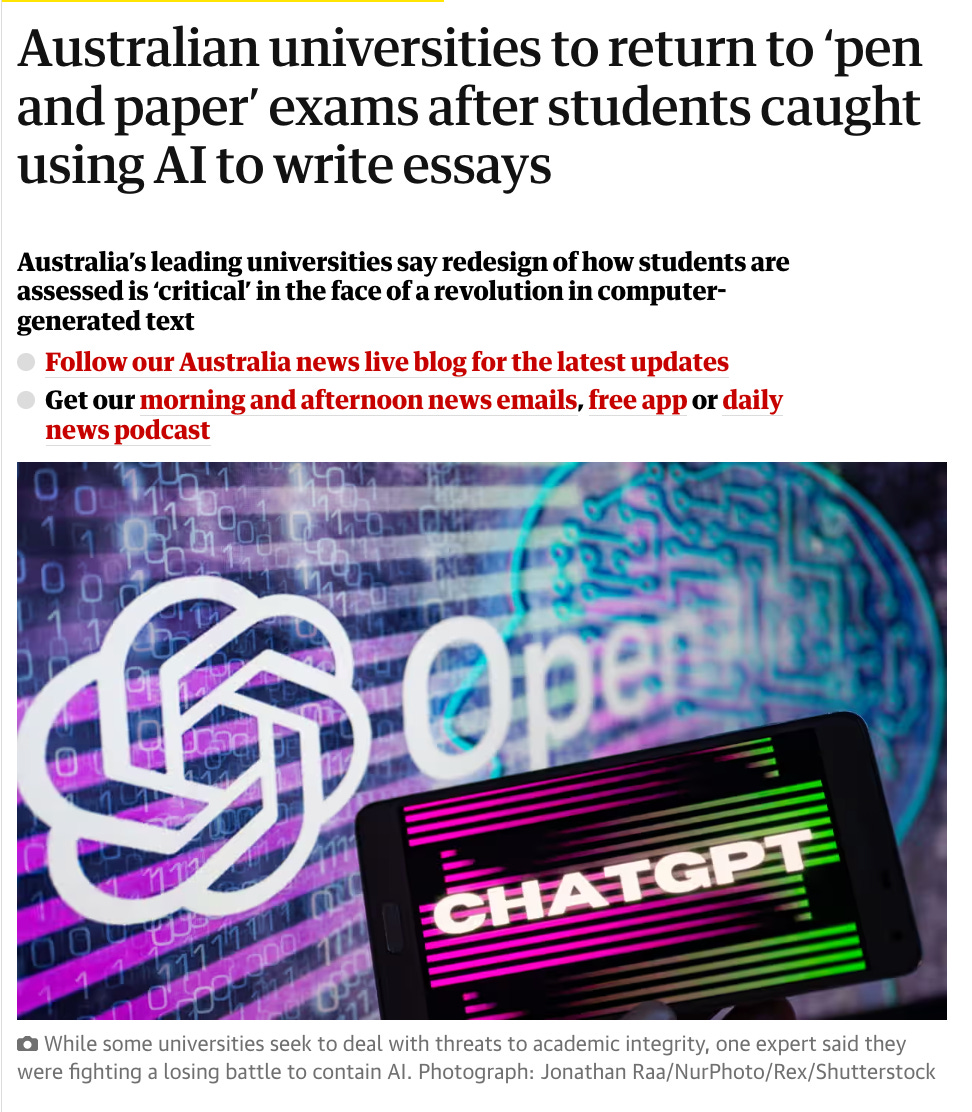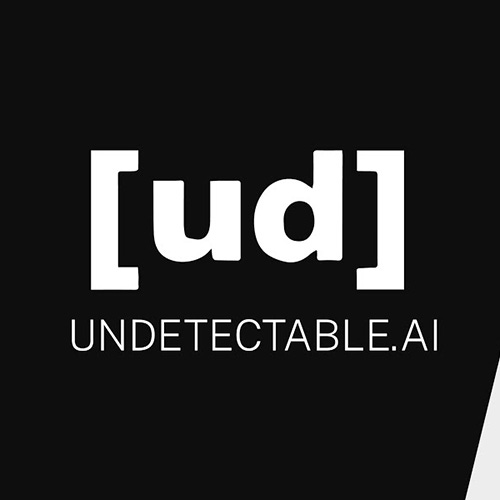AI: the key to the relevance, value & integrity of higher education?
Hey folks!
Yesterday, I was lucky enough to take part in the first annual teaching day at Norway’s leading Business School, BI. The purpose of the event was to share and celebrate the art and science of great teaching.
Among a wonderful series of presentations and celebrations, I discussed the impact that AI has had on higher ed teaching since 2022 and asked whether AI presents universities with an unprecedented level of risk, or an unprecedented level of opportunity.
Here’s the TLDR…
Chapter 1: Panic!
In December 2022, with the release of ChatGPT, the overwhelming response to AI from higher ed was one of panic. If a machine can write an essay better than the average student, the higher education system is broken.
The reaction? A rapid return to the classroom, where essays as well as exams were completed under the watchful eye of educators.
The immediate threat of AI was was managed, but it was impractical, unscalable and unsustainable.
Enter: AI detection technologies.
Chapter 2: AI Detection
Like the plagiarism tools that came before them, AI detection tools like GPT Zero and Originality AI enabled institutions to monitor students at a distance and at scale. They did (and in many institutions still do) this by “reading” texts submitted by students and differentiating between those produced by humans and those generated by AI.
Or so they say.
A lot of research and testing of AI detection technologies shows that they don’t do great job of detecting and differentiating AI-generated text from human-authored text.
AI detection technologies have also proven to be deeply problematic in other ways; in a paper published earlier this year, researchers found that AI detectors consistently misclassify so-called non-typical writing - e.g. writing by non-native English students and neurodiverse students - as AI-generated.
The conclusion: “GPT detectors unintentionally penalise both non-native English writers and writers with constrained linguistic expressions”.
Chapter 3: Anti-AI Detection
At the same time that large ed tech companies like TurnitIn were developing AI detection technologies, smaller companies were building “anti detection technologies” which humanise AI text and made them undetectable by AI-detection technologies.
And so many universities entered in a game of cat and mouse, where AI was used both both to detect and disguise AI-generated texts.
Chapter 4: Research
In part as a result of the shortcomings of AI detection and the realisation that the essay was - in fact - not possible to preserve, from mid 2023 more and more research was conducted on the potential benefits of AI for higher education. What if instead of ring to ban and detect AI, we leveraged it as a tool for both efficiency and effectiveness?
Here are just four examples of the research that was published on AI’s impact on higher ed in 2023, and what we learned from it:
Zhang, J. (2023), Impact of Artificial Intelligence on Higher Education in the Perspective of Its Application of Transformation
Analyzed the application of AI technologies like machine learning and virtual reality in higher education.
Findings: AI has huge potential to enable educators to design and delivery of more personalised, relevant and engaging learning experiences. The study emphasised the need for the higher education system to adapt to these emerging technologies to remain effective (Zhang, 2023).
Lin, Luo, & Qian (2023), Investigation of Artificial Intelligence algorithms in education
Investigated the potential of Intelligent Tutoring Systems (i.e. chatbots)to help scale feedback support in higher education.
Findings: AI can provide targeted educational support, adapting to individual learning needs and enhancing the overall equality and impact of educational experience (Lin, Luo, & Qian, 2023).
Abbas et al. (2023), Role of Artificial Intelligence Tools in Enhancing Students' Educational Performance at Higher Levels
Examined the role of AI tools - personalised learning systems, intelligent tutoring systems, and automated assessment tools - and their potential to enhance learning outcomes, engagement, and overall academic achievement. in enhancing students' educational performance at higher education levels.
Findings: AI tools significantly improved learning outcomes, student engagement, and academic achievement, though they require effective implementation strategies and teacher training (Abbas et al., 2023).
Nagaraj et al. (2023), The Emerging Role of Artificial Intelligence in STEM Higher Education: A Critical Review
A critical reviewed of the emerging role of AI in STEM higher education, focusing on its impact on teaching, learning, and institutional strategies.
Findings: AI is seen as a transformative force in STEM education, enhancing student engagement and innovating and improvement assessment practices beyond the essay based model (Nagaraj et al., 2023).
Chapter 5: Experimentation & Implementation
If the first half of 2023 was about discussion and research, the second half of 2023 and early months of 2024 have been all about experimentation.
Buoyed by a growing body of research and supported by the introduction of AI policies and training, more and more educators in higher ed have been empowered to experiment with AI in their classrooms. Many large scale experimental projects are now underway, including a formal partnership between Arizona State University and OpenAI and the creation and testing of a suite of AI tools a Michigan State.
Broadly speaking, experimentation in higher ed falls into two categories:
AI for Efficiency: using AI to streamline administrative tasks like grading, report writing and data analysis to free up time for higher value tasks.
AI for Effectiveness: working with AI to innovate curriculum and assessment design to improve the engagement, satisfaction and achievement of students.
While we’ve talked a lot about the risks of adopting AI in higher ed in the last 18 months, we’ve discussed much less the risks of NOT adopting AI. Research now shows that if higher education institutions don’t adopt but rather repress the use of AI they run the risk of:
Delivering sub-optimal teaching and learning experiences
Perpetuating student inequity
Compromising the relevance and value of higher education in a post-AI world.
The question I asked colleagues yesterday and one I think we need to talk about more is: to what extent is AI an existential threat to higher ed, and to what extent is it an unprecedented opportunity to solve some of the most wicked problems of higher ed?
If you want to read more on this topic, check out my related post on the London School of Economics’ site.
Happy innovating!
Phil
PS: If you want to be part of a thriving community of AI + learning design folks, join us on LinkedIn.
PPS: If want to dive into the world of AI & education with me and a community of innovators from the world of education, check out my 3 week online bootcamp.
PPPS: If want to get access to a monthly digest of the most important research and experimentation in the world of AI & education, check out my Learning Futures Digest.







